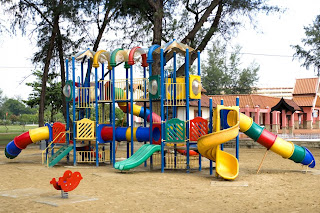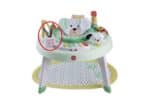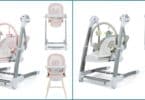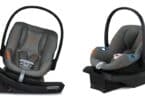CPSC has a great article on Playground Safety. Now that spring is here parents are flocking to the parks and playgrounds. Here are some tips for creating your play area that will keep your children safe.
 Compare the playgrounds of 25 years ago to today’s modern playsets and the differences are striking – metal has been overtaken by colorful plastics and wood, homemade rope swings have been replaced by rope ladders anchored for safety, and single-level structures have been dwarfed by multi-tier castles. Yet with all the advances in playground designs, there are still far too many playground-related injuries involving children – about 200,000 each year. In recognizing National Playground Safety Week, the U.S. Consumer Product Safety Commission is encouraging parents to make sure backyard, childcare center and community playgrounds are safe and that children are always supervised while at play.
Compare the playgrounds of 25 years ago to today’s modern playsets and the differences are striking – metal has been overtaken by colorful plastics and wood, homemade rope swings have been replaced by rope ladders anchored for safety, and single-level structures have been dwarfed by multi-tier castles. Yet with all the advances in playground designs, there are still far too many playground-related injuries involving children – about 200,000 each year. In recognizing National Playground Safety Week, the U.S. Consumer Product Safety Commission is encouraging parents to make sure backyard, childcare center and community playgrounds are safe and that children are always supervised while at play.
To assist in building and maintaining a safe playground, designers, inspectors and homeowners have been consulting CPSC’s Handbook for Public Playground Safety for more than 25 years. The handbook provides specifications for creating safe play zones; what materials to use; and how to properly install climbing equipment, slides and swings. CPSC staff is undertaking a major update of this publication to reflect current safety standards and best practices. The new, updated Handbook is targeted for re-release later this year.
To help prevent injuries from falls and other hazards on public and home playgrounds, the following safety tips are recommended:
- Never attach ropes, jump ropes, clotheslines, or pet leashes to the equipment. This can present a serious strangulation hazard to children.
- Make sure children remove their bike or other sports helmets before playing on the playground. Helmets can become entrapped in playground equipment, posing a strangulation hazard.
- Purchase play equipment that meets the latest safety standards.
- Smooth sharp points or edges, and close open “S” hooks and cover protruding bolts.
- Check for openings in guardrails or between ladder rungs. Spaces should be either less than 3 1/2 inches or more than 9 inches so that they don’t present an entrapment hazard.
- Always supervise young children to make sure they are safe.
- Install and maintain at least 9 inches of wood chips, mulch, or shredded rubber (for equipment up to 8 feet high) or sand or pea gravel (for equipment no more than 5 feet high) as shock-absorbing material under the playground. (Dirt and grass, which are the most prevalent surfaces under home playground equipment, do not adequately protect children from serious head injuries.)
- Install protective surfacing at least six feet in all directions from play equipment. For swings, the surface should extend, in back and front, twice the height of the suspending bar.
For more information about National Playground Safety Week, visit the Website for the National Program for Playground Safety at www.playgroundsafety.org/safetyweek/index.htm






